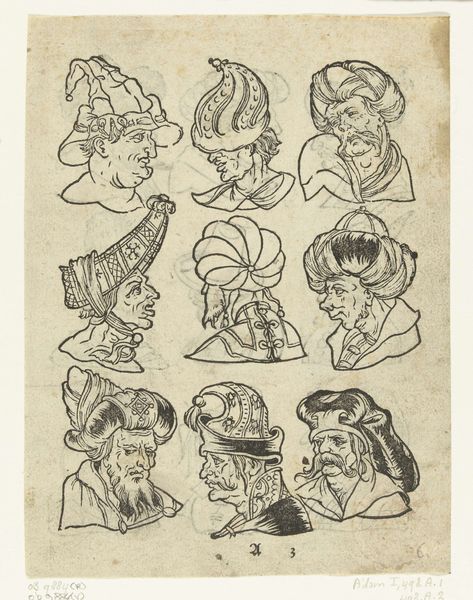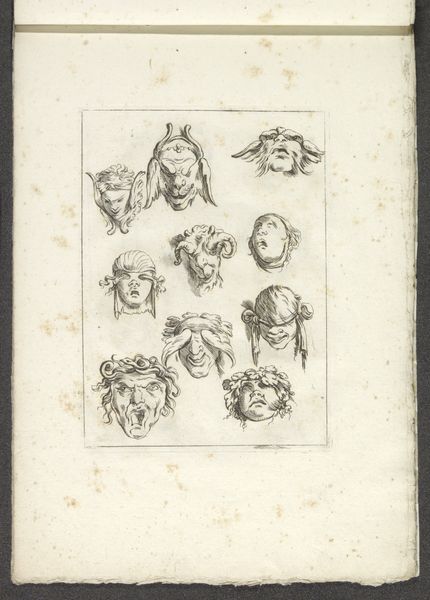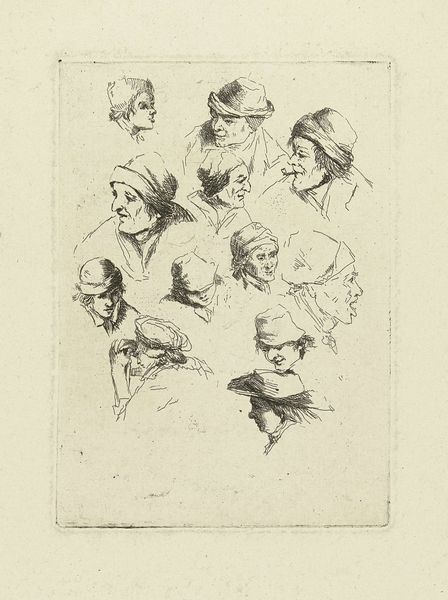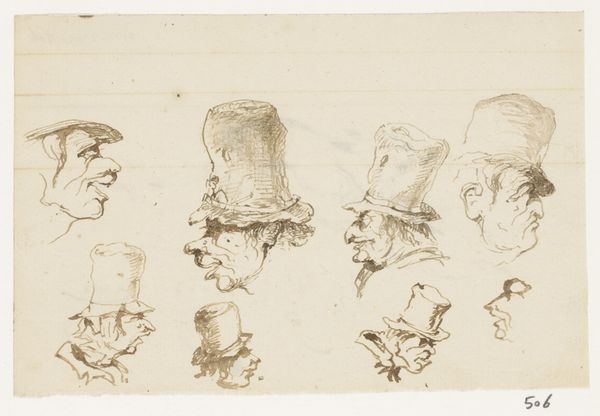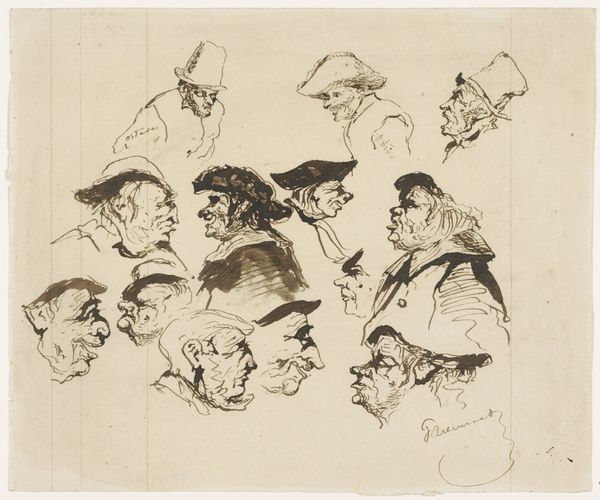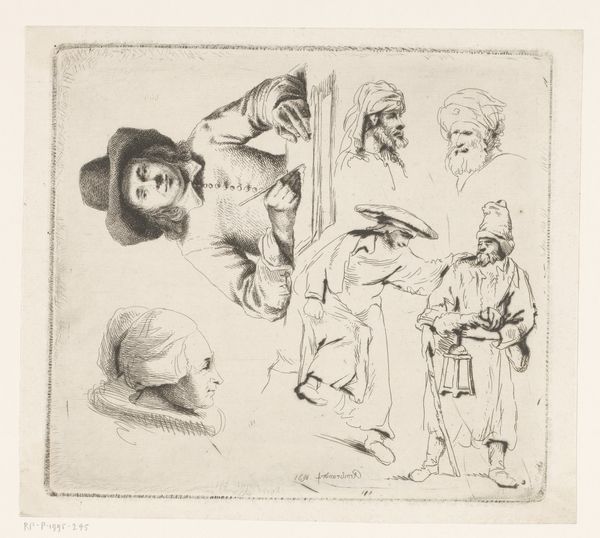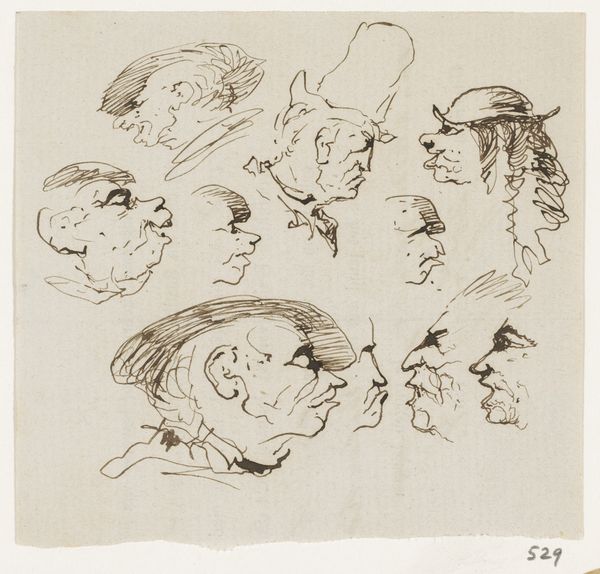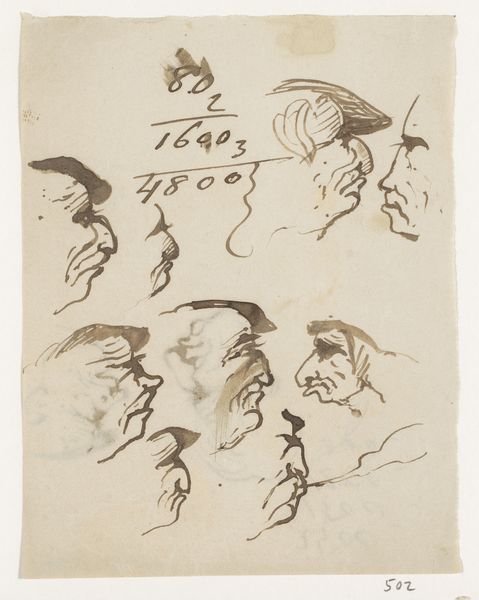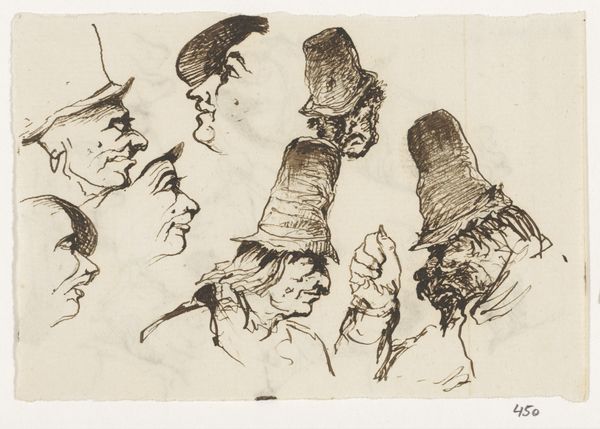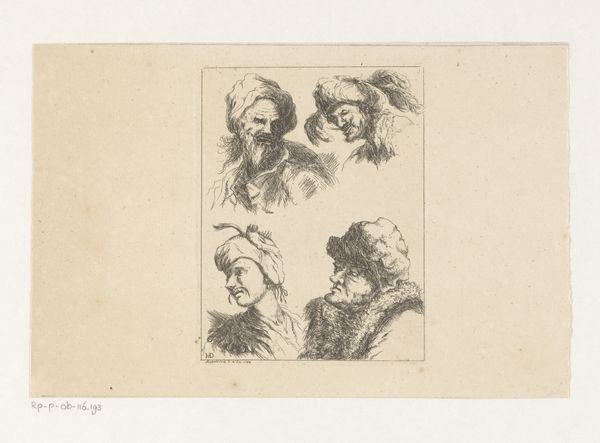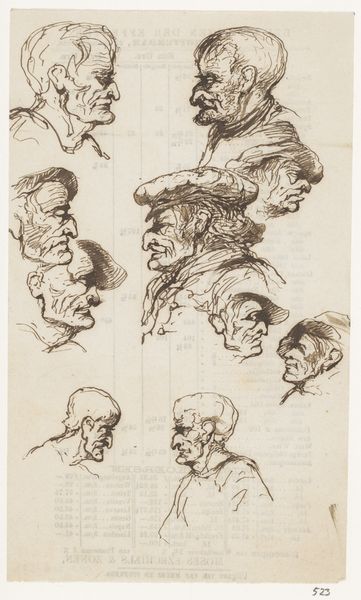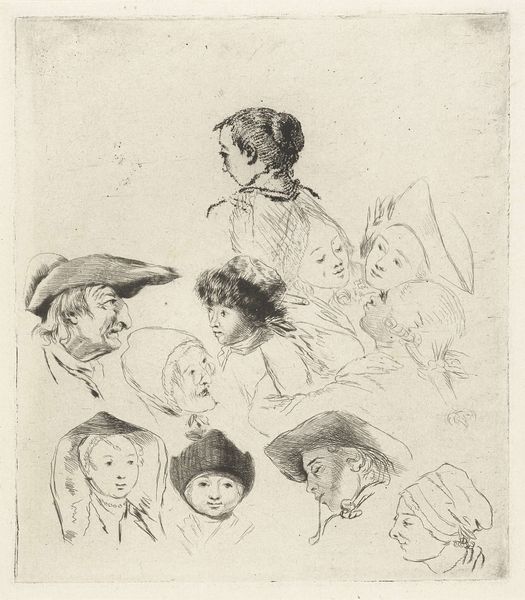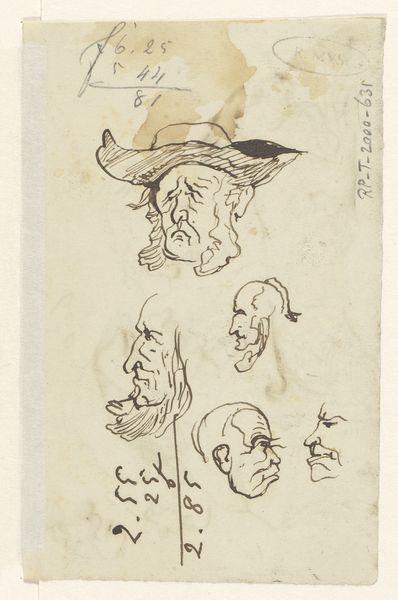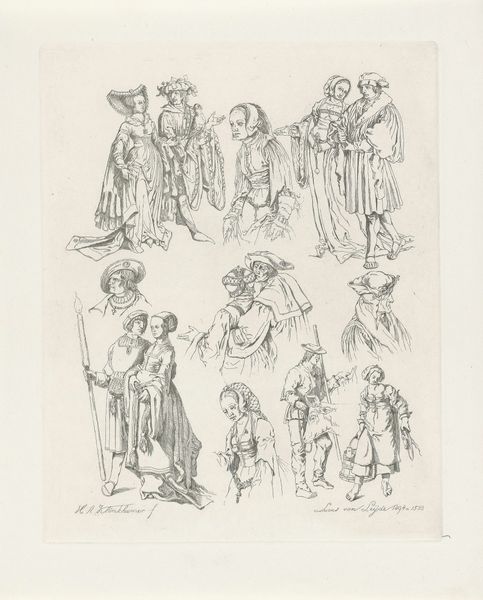
drawing, pen
#
portrait
#
drawing
#
comic strip sketch
#
imaginative character sketch
#
light pencil work
#
cartoon sketch
#
11_renaissance
#
personal sketchbook
#
sketchwork
#
ink drawing experimentation
#
sketchbook drawing
#
pen
#
history-painting
#
storyboard and sketchbook work
#
sketchbook art
Dimensions: height 157 mm, width 116 mm
Copyright: Rijks Museum: Open Domain
Curator: What an amusing lineup! Jean Dubrayet gives us “Compositie met negen mannenhoofden,” from around 1627. It’s a pen and ink drawing showcasing nine distinct male figures. My first thought? They look like they're auditioning for a play, each one vying for the role of the wise, slightly world-weary sage. Editor: Exactly! And each man's attire points to complex historical intersections of power, fashion, and identity. Notice how headgear is used not just as decoration, but as a signifier of status. Curator: Totally, those hats are working overtime. And some of them look so precarious; how did they keep them from toppling over? Editor: This era saw sumptuary laws attempting to regulate who could wear what, reinforcing social hierarchies through dress. This drawing seems almost a critique of such rigid systems. Who dictates taste, or status? And for what purposes? Curator: I see what you’re saying. There is also this quality about it like these figures are stock characters or studies in contrasts, almost like different versions of the same soul in different disguises. The drawing itself is so light. It makes me think it was something pulled from the artist’s sketchbook rather than a formal piece of art. Editor: Absolutely, sketchbooks were vital spaces for artists to explore ideas, practice techniques, and record observations. Thinking about the performativity of gender within those specific social dynamics, these “heads” reflect ideals around masculinity and the elaborate theatricality involved in performing it. Curator: This drawing makes you want to see the characters come to life, act, and reveal a story from history that the viewer becomes immediately connected with. There's even something strangely timeless about it. Even now, people are being assessed or sized-up based on what they wear or how they look, or present. Dubrayet really hits home how the world sees us isn't always who we really are inside. Editor: In many ways, these archetypes resonate through generations—they reflect enduring issues around power dynamics, performance, and representation. That's precisely where art makes a space for dialogue, where the past connects with our present.
Comments
No comments
Be the first to comment and join the conversation on the ultimate creative platform.
